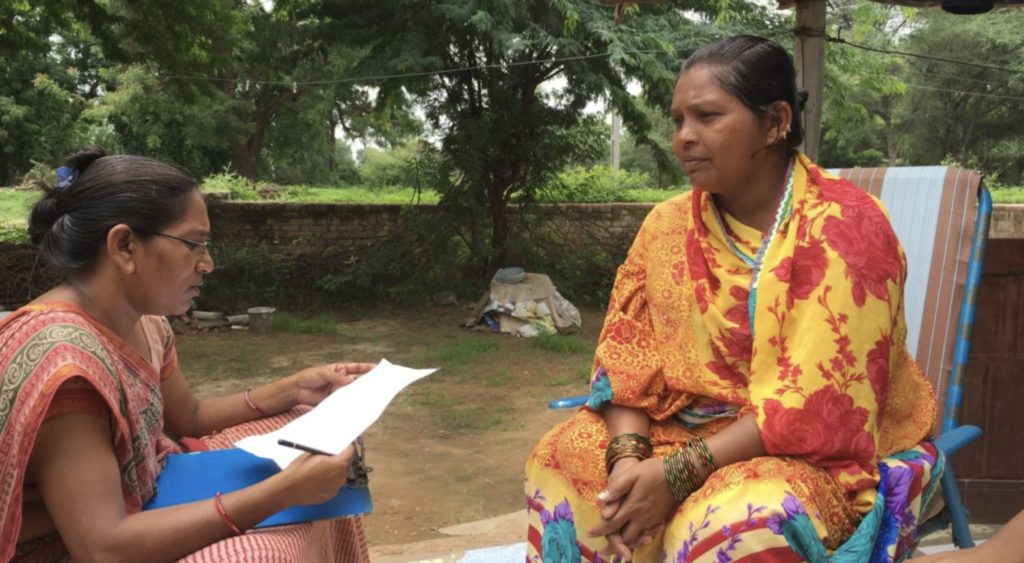
Annual Reports
2019 Annual Report
Mar 31st 2020
To read the 2019 annual report, click here.
Read MoreSurveying households usually feels like an act of extraction—the person interviewed is asked to answer loads of questions, some quite personal, and then they typically see neither the surveyor again nor the survey results, especially in large scale surveys.
SEWA has been undertaking a census of all its 1.5 to 2 million women members this year. Remarkably, it has been turning this into a reciprocal act, in which the interaction in the survey can become a source of service to the member.

The Membership Management System (MMS) succeeds earlier systems. Members have always had a membership form filled when joining or renewing with the R10 fee. (This is a legal requirement for the union.) But the earlier system typically involved cumbersome data entry, and could not track members from year to year. The new 2016 system is giving unique membership IDs, involves pre-printed forms with the information available from previous years, and has one page survey of key information. It is being complemented by a sample-based living standards survey. The whole system will evolve to an integrated data management system, combining membership information, use of SEWA services, administrative information, and tracking of members over time. The front-line survey is still on paper this year; it will move to tablet as soon as resources allows. (IMAGO has been helping on both the MMS and the living standards survey.)
The MMS is a huge management task in an organization that is stretched thin and under constant daily pressures. We visited in July, and were surprised and delighted to discover an atmosphere of excitement, especially from all the rural district coordinators. They wanted to share how the process of conducting the MMS had become a source of discovery of the characteristics and needs of their members, and often a basis for action. If the interview revealed the member didn’t have the government Universal ID (aadhar), they could help them. Or they could discover an entitlement for a pension. They could use mobile phone numbers to contact members. And as the form included trade and age, they could target messages to the groups that SEWA services were aimed for. And they were getting a better picture of their overall membership.
This could happen precisely because the survey is being managed through SEWA’s core system, with the census and surveys being undertaken by village or urban ward leaders. These are themselves members from the grassroots, with a direct interest in working with and for their members. There are also difficulties: some women are suspicious of giving information away, and, especially in urban areas, where there has been much more change in location and work. These can be helped by institutionalizing what is emerging from the work of the village leaders—developing protocols of the services SEWA can provide, both to give context to the survey, and specific prompts on opportunities to help members based on answers to the questions. SEWA is beginning to make a burdensome activity, in which information is extracted and sent up an organization, to one that is potentially fundamentally reciprocal.